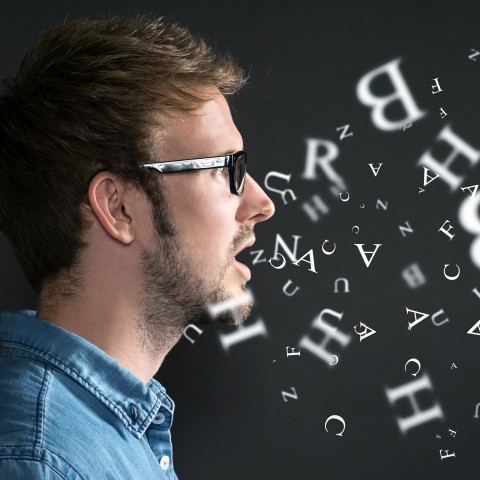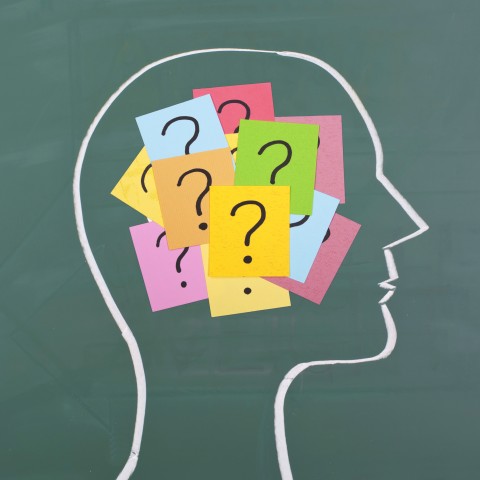
Everybody makes mistakes. And yes, it’s almost guaranteed that you’ll make mistakes while learning a new language, especially one as difficult as Cantonese!
Making mistakes is no big deal—as you come closer to fluency in a language, you’ll have the time to figure out what mistakes you’re still making and how to address them. And that’s exactly what this guide is about.
In this article, we’ll list the most common Cantonese mistakes people make when learning the language, covering a wide range of categories from pronunciation to word order. By the end of this article, you should be able to spot many mistakes, some of which are very easy to fix!
 Table of Contents
Table of Contents
- Pronunciation Mistakes
- Vocabulary Word Mistakes
- Word Order Mistakes
- Grammar Mistakes
- Another Big Mistake in Cantonese
- The Biggest Mistake: Being Afraid of Making Mistakes in Cantonese!
- How CantoneseClass101.com Can Help You Learn More Cantonese
1. Pronunciation Mistakes

Mistake #1: Using the wrong tones
Most learners aren’t familiar with tonal languages like Cantonese. In tonal languages, the meaning of a word can change depending on the pitch, even if the pronunciation remains the same. To people who don’t speak a tonal language, some tones may sound identical! This problem of perception is perhaps the most difficult part of learning a language like Cantonese.
If you’ve learned even a little bit of Cantonese, you probably know by now that we can use a romanization system called “Jyutping,” which consists of two components: “pronunciation,” followed by a “tone number.” Be mindful that even if the “pronunciation” of two or more words is identical, the meaning of the words can be very different if they have different “tone numbers.”
For example:
| Chinese Character | Romanization | Meaning |
| 巴 | baa1 | “bus” |
| 把 | baa2 | “handle” |
| 罷 | baa6 | “cease” |
As you can see, changing the pitch can have a huge impact on the meaning! Always keep your eye and ear out for changes in tone and pitch to avoid a confusing mistake in Cantonese.
Mistake #2: Mixing up J and Y in the Jyutping system
The Jyutping romanization system is a bit different from English, and one of the most confusing aspects of it is the J consonant. Although it’s represented as a J, it actually sounds like an English Y. So whenever you see the letter J in Jyutping, remember that it’s pronounced as a Y sound.
For example:
| Chinese Character | Romanization | Meaning |
| 有 | jau5 | “have” |
| 二 | ji3 | “two” |
| 元 | jyun4 | “dollar” |
Mistake #3: Mispronouncing the C and Z consonants
The Cantonese C sounds a bit like a TS sound, like in “tsunami.” But unlike with the traditional TS sound in English, try to emphasize the T more than the S in Cantonese. Pronouncing it quickly may sometimes help with pronouncing the Cantonese C properly. Lastly, you want to release a burst of turbulent air when you’re pronouncing this sound.
The Cantonese Z sound is identical to that of the Cantonese C, except that you do not produce a burst of air. It has a strong DZ sound.
For example:
| Chinese Character | Romanization | Meaning |
| 千 | cin1 | “thousand” |
| 抽 | cau1 | “draw” |
| 俏 | ciu3 | “pretty” |
| 煎 | zin1 | “fry” |
| 周 | zau1 | (common last name) |
| 照 | ziu3 | “shine” |
2. Vocabulary Word Mistakes

Mistake #4: Mixing up 咗 (zo2) and 過 (gwo3)
The great thing about Cantonese is that there are no verb tenses, conjugations, etc. However, there are two little words used to show that something took place in the past. These little words are particles, and they often come after a verb: 咗 (zo2) and 過 (gwo3).
Since both 咗 (zo2) and 過 (gwo3) indicate past tense, it’s quite common for people (especially beginners) to get these mixed up:
| 咗 | 過 | |
| Romanization | zo2 | gwo3 |
| Meaning | shows that an action is complete, similar to the English “-ed” that comes after a verb when an action is done | shows an experience that someone has had before in the past |
| Take the sentence 我去 (ngo5 heoi3), meaning “I go,” as an example: | ||
| Characters | 我去咗 | 我去過 |
| Romanization | ngo5 heoi3 zo2 | ngo5 heoi3 gwo3 |
| Meaning | “I went.” | “I’ve been (there).” |
From the example sentences above, you can see that when you add 咗 (zo2) to the sentence 我去 (ngo5 heoi3), or “I go,” the “go” becomes “went.” But if you add 過 (gwo3) instead, the “go” becomes “been.”
Mistake #5: Mixing up 唔 (m4) and 冇 (mou5)
There are two ways to negate a Cantonese verb: with 唔 (m4) or with 冇 (mou5). We put either of these two words in front of the verb to show that it is negative, but sometimes, it can be confusing to know when to use which.
The table below demonstrates the difference between the two:
| 唔 | 冇 | |
| Romanization | m4 | mou5 |
| Meaning | negates action verbs in the present & future, or when talking about habitual things | negates verbs in the past tense, such as when you describe an action that either did not happen, or is not yet complete |
| Take the sentence 我食 (ngo5 sik6), meaning: “I eat,” as an example: | ||
| Characters | 我唔食 | 我冇食 |
| Romanization | ngo5 m4 sik6 | ngo5 mou5 sik6 |
| Meaning | “I don’t eat.” | “I didn’t eat.” |
There are actually a couple more instances where you can use 冇 (mou5) to negate, but we’ll keep it simple here. You may check out our dictionary or class content to learn more!
3. Word Order Mistakes

Mistake #6: Putting the question word first in a question
In English, we usually start a question with the “W” words, like “Why,” “What,” and “Where,” but this is not the case in Cantonese. We do it the other way around, putting the Cantonese question word at the end of the question.
Take “Where is my book?” as an example:
- Where: 邊 (bin1)
- Is: 喺 (hai2)
- My book: 我本書 (ngo5 bun2 syu1)
If you arrange the words in the English way, you’ll have 邊喺我本書 (bin1 hai2 ngo5 bun2 syu1), which is incorrect in Cantonese. The correct way to ask the question is: 我本書喺邊?(ngo5 bun2 syu1 hai2 bin1).
Let’s look at two more examples: “Who is she?” and “What are you eating?”
- Who: 邊個 (bin1 go3)
- Is: 喺 (hai2)
- She: 佢 (keoi5)
- Correct order: 佢係邊個?(keoi5 hai6 bin1 go3)
- What: 咩呀 (me1 aa3)
- You: 你 (nei5)
- (Are) eating: 食緊 (sik6 gan2)
- Correct order: 你食緊咩呀?(nei5 sik6 gan2 me1 aa3)
Mistake #7: Putting time adverbs at the end of a sentence
In English, we usually put the time adverb at the end, or occasionally at the beginning, of a sentence. But in Cantonese, we put the time adverb before the verb instead.
The correct way to add “time” to a simple “Subject (S) + Verb (V) + Object (O)” sentence in Cantonese is: “S + Time + V + O.”
Take “I watched a movie last week” as an example:
- I: 我 (ngo5)
- Watch: 睇 (tai2)
- Movie: 戲 (hei3)
- Last week: 上個禮拜 (soeng6 go3 lai5 baai3)
- Correct order: 我上個禮拜睇戲 (ngo5 soeng6 go3 lai5 baai3 tai2 hei3)
Want to learn more about how to arrange words in Cantonese? Check out our article on Cantonese word order for more detailed information!
4. Grammar Mistakes

Mistake #8: Directly translating from English to Cantonese without considering parts of speech or context
Have you ever directly translated something from English to Cantonese? Sometimes it works, but very often, your listener may find it confusing. It’s like using Google Translate (it’s a very convenient tool, no doubt!) without double-checking the results (as they may be a bit odd).
Take “He is very sick” as an example:
- Literal translation of “He is very sick” in Cantonese: 佢好病 (keoi5 hou2 beng6)
- Meaning of “佢好病”: “He’s crazy.”
- Correct translation of “He is very sick” in Cantonese: 佢病得好重 (keoi5 beng6 dak1 hou2 cung5)
It might take some time to develop a good understanding of the different parts of speech and how to more accurately translate into Cantonese, but no worries. Practice makes perfect. Try more, and learn from your mistakes!
Mistake #9: Using (or not using) a final particle
There are many final particles in Cantonese to indicate a change of mood or even the meaning of a word or phrase. If you use the wrong Cantonese particle, you may end up expressing the wrong emotion. And in some cases, forgetting to include a final particle may come across as rude!
Below are some examples of final particles:
| Particle | Meaning | Example |
| 呀 (aa3) | used in neutral questions, or to soften the tone of affirmative statements so they don’t sound as abrupt | 我返屋企呀 ngo5 faan2 uk1 kei2 aa3“I’m going home.” |
| 啦 (laa1) | used in requests and imperatives (leaving it out could make the sentence sound rude) | 俾我啦 bei2 ngo5 laa1“Give it to me (please).” |
| 囉 (lo1) | indicates a suggestion or conclusion that should be obvious | 我冇車咪返唔到屋企囉 ngo5 mou5 ce1 mai6 faan2 m4 dou2 uk1 kei2 lo1“Without a car (of course), I am unable to go home.” |
5. Another Big Mistake in Cantonese

Mistake #10: Using too many words
A lot of Cantonese-learners, in an attempt to translate what is polite in their own language, will make a mess of a sentence in Cantonese by adding a lot of unnecessary words. Cantonese actually says things a lot more directly!
Take “Would you mind going to the store for me, please” as an example:
- A native Cantonese-speaker would ask with: 你去士多?(nei5 heoi3 si6 do1)
- Literal translation of “你去士多”: “You go store?”
A lot of westerners find it strange to be so concise—it would feel rude to say that in English. But finding places to add superfluous “pleases” and stuff is unnecessary. It’s okay to use less words in Cantonese. It doesn’t sound rude at all.
6. The Biggest Mistake: Being Afraid of Making Mistakes in Cantonese!

The truth is that the only way you’re going to get a standard accent, order sentences correctly, or get better at using and understanding tones is through making mistakes. So don’t worry. Even if you make a mistake, Cantonese people can usually guess what you’re saying, especially when there’s context. And if they can’t understand, there are always charades.
The point is, you need to get out there and practice. Use the words you know. Engage in conversation. Then you’ll start to correct yourself, and your ear will get tuned to the language. Cantonese people love it when you try, so they’ll be very encouraging, for sure!
7. How CantoneseClass101.com Can Help You Learn More Cantonese
Learning from mistakes surely helps, but so does learning from 1000+ audio and video lessons!
With CantoneseClass101.com, you can have your daily dose of Cantonese whenever and wherever you want, through mobile apps, desktop software, and our website. We offer entertaining, engaging, and effective lessons on various aspects of the Cantonese language and culture.
Until now, we’ve delivered more than 750,000,000 lessons to thousands of happy students from all around the globe. You can learn Cantonese with over 1060 audio and video lessons delivered by our knowledgeable and energetic hosts, detailed PDF lesson notes, an abundance of vocabulary learning tools, spaced repetition flashcards, and a lively community to discuss the lessons with fellow learners. What are you waiting for? Download our lessons, enjoy our audio and video files, and start learning now!
And keep in mind that if you prefer a one-on-one learning approach and want to further accelerate your Cantonese learning, you can take advantage of our MyTeacher program!
Know that your hard work will pay off, and before you know it, you’ll be speaking Cantonese like a native!
Before you go, let us know in the comments how many of these mistakes you’ve made before, and if this article was helpful for you. We look forward to hearing from you!










